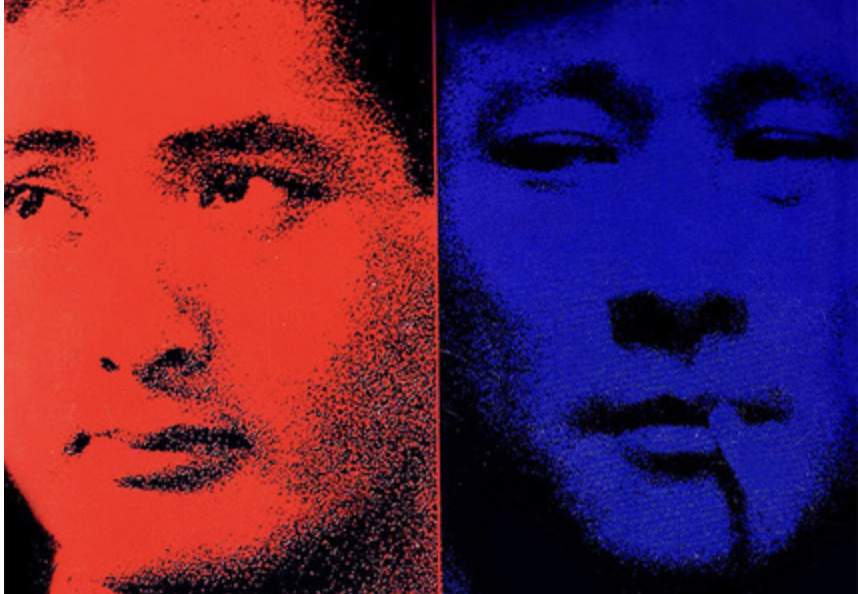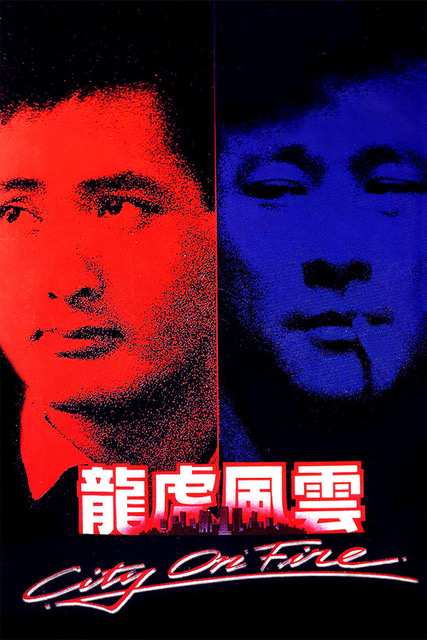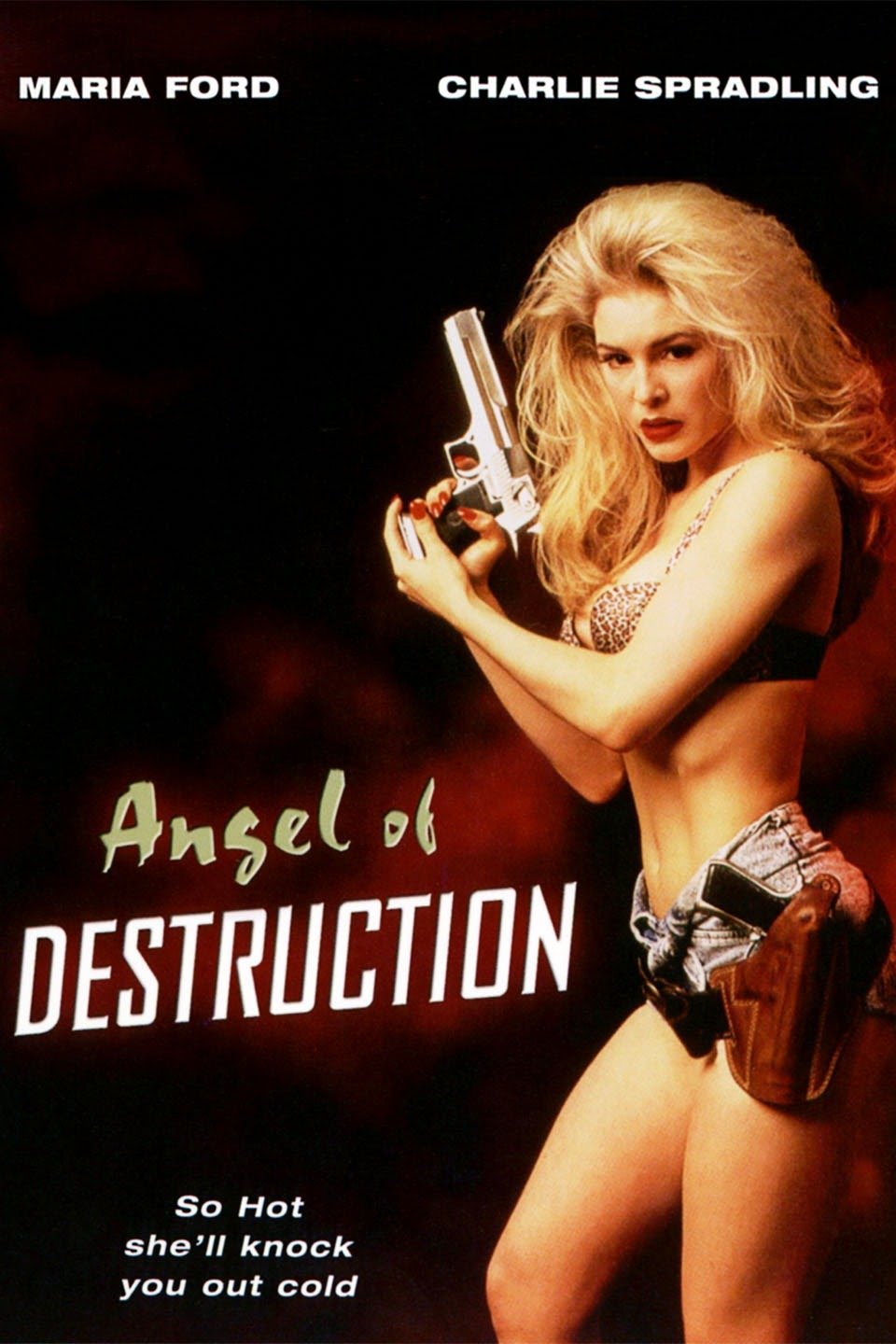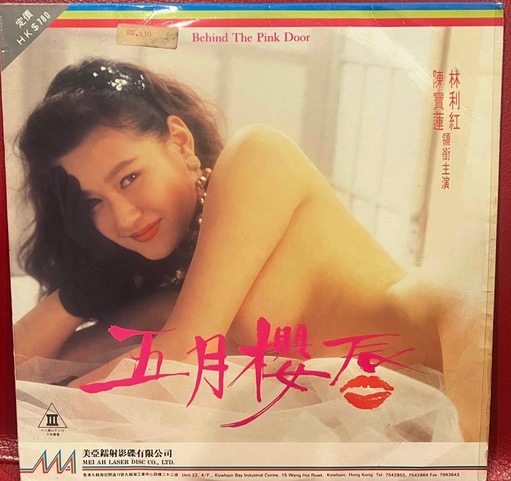Preserving B-Cinema: Disc-Junkie Illuminates the Alleys and Backlots of Hong Kong and L.A.


If death and taxes are inescapable, then technological obsolescence surely belongs in the same category. The LaserDisc [LD], an optical storage medium jointly developed by Pioneer, Philips, and MCA, made its public debut in 1978 under the quaint brand name DiscoVision. Pioneer later pushed the format forward as LaserVision. Despite its superior image quality and resistance to humidity, they were no match for already on the market VHS and Betamax. Probably because LaserDiscs (discs for short) were bulky, players costly, and films had to, get ready for it, be flipped halfway through. Yet, they found a fervent niche within the low-budget market, mostly in Japan, Hong Kong, Malaysia, Indonesia, and Singapore, but also on a smaller scale in the United States, and were produced until 2001.
This is not a technical postmortem on the format, nor an elegy for its commercial decline. Instead, I became interested in the medium through one of my colleagues, Bryan Dembinski, a production sound mixer for film and television. Between takes of Apple TV’s Severance, just after the lockdown lifted, I discovered that Dembinski was a guardian of lost cinema with a collection of over 16,000 titles of discs amassed from libraries, private collectors, and obscure sellers around the globe, especially in Asia. The crown jewels of his archive are the Hong Kong films: fragile, fleeting works of the New Wave by directors like Fan Ho, Patrick Tam, Ann Hui, Johnny To, Ringo Lam, and a young Wong Kar-Wai. Produced with scant resources but boundless cinematic ambition, these films are vivid records of a cultural moment. Outside of Dembinski’s carefully catalogued storage unit, they have all but vanished.
Equally fascinating are the American films that bypassed theaters and went straight to disc. For two decades, this parallel industry produced its own stars and directors. Dembinsky has a particular fondness for Maria Ford, the irrepressible cult actress who once cleared a room of villains with topless kung-fu fury in Angel of Destruction. Quentin Tarantino, another admirer, has even cited her in interviews.
‘It is funny how Dembinski’s system of spreadsheets and discs stored on shelves in his home illuminates these forgotten corners of Hong Kong alleys and Los Angeles backlots (while nodding to the odd money laundering scheme and the beginning of watching porn at home).
Through his collection I discovered three distinct cinematic worlds hidden within the format: Hong Kong feature films of the 1980s–1990s, many released briefly in local theaters before disappearing onto disc, never to surface again, American B-movies, produced directly for LaserDisc before “Straight to Video” became shorthand for the cinematic underclass, and mainstream theatrical releases, distributed widely but preserved here in their original form.
I love an obsolete format, so in the studio parking lot, from the back of his Honda he set me up with everything to properly watch it. I tried it with my home projector. Was it a radically different viewing experience? No. Dembinski’s devotion puzzled me so much that I had to find out what so attracted him to obsessively preserving this medium.
So, I called him up to get the full story.

How did LaserDiscs come into being?
The LaserDisc (LD), jointly developed by Pioneer, Philips, and MCA, debuted in 1978 under the brand name DiscoVision. It promised a home-theater experience without the expense and hassle of film projection.
Do LaserDiscs have a distinct look?
It was the last analog video format created from film prints transferred directly to laser—I love its look: both authentic and period-correct. I also love it because it was the last analogue video format, and it had superior picture quality. It looked better than VHS or Betamax but LaserDisc could not compete with them. The one advantage it had in Asia was that LaserDiscs resisted humidity and decay.
What kind of films were put on LaserDiscs?
Oh, everything. Mainstream Hollywood releases, Hong Kong feature films of the 1980s–1990s, instructional films, soft-core porn, karaoke backgrounds, but the oddest were Japanese videos for doctors’ waiting rooms, that had pastoral scenes with semi-naked young girls prancing around like nymphs.

Wow. How much was a disc?
They weren’t cheap: a single copy of A League of Their Own sold for $100. To own a player and a 40-inch CRT screen was to announce yourself as part of the deluxe new suburban class. The suburbanization of wealth. Also, the discs created another first: the ability to screen porn at home so you didn’t have to go to theaters.
How did you first get hooked?
I was working at NYU Film School, where disks were easier to show than a 16mm film. In 2002, I heard they were dumping the collection so I took a bunch of them. I should have taken more…But they are heavy.
That started it?
Yeah, I started buying off Craigslist, stoop sales, or Kim’s Video. It was exhausting moving them on the subway so I bought a little red wagon to haul stacks of them back home. This was before the subway had elevators. I’d get home drenched in sweat and call my roommate down to help me carry them up to our apartment. I then got busy working on films and things quieted down until the birth of Maddie, my daughter.
So it’s your daughter’s fault?
No, there are a lot of kids films on LaserDisc. Animated features, cartoons, so I started buying for her.
Sure you did.
With the internet I could find and buy whole collections. Video stores and libraries would just get rid of their discs and I was there.

How did you get involved in the Hong Kong scene?
I started buying whole collections from video stores in Indonesia. Not from the big cities but from the islands where they produced palm oil. A lot of the guys in the fields were Chinese, there’s not much to do after all day making palm oil except to kick back and watch a LaserDisc from Hong Kong.
Who were some of the directors from Hong Kong?
Fan Ho, Patrick Tam, Ann Hui, Johnny To, Ringo Lam, and a young Wong Kar-wai were some of the most interesting ones. These directors had seen western films and used what they saw in their work. Movies were shot in a couple of weeks on low budgets. It was disposable entertainment. A hit might stay in theaters for ten days, a flop for four, before going right to LaserDisc.
So, they may exist nowhere else but in your library.
There may be some other disks floating around, but not many. Some producers didn’t even care if they made money. Many productions were just money-laundering schemes. Film is an easy way to move things around.

What about the American stuff?
They were mostly West Coast productions with lots of films going straight to LaserDisc. They had their own directors and actors who rarely made it out of the trenches. They are slasher films, rape-revenge, murder/cop stories, and lots of soft-core porn.
Who are your favorite actors?
By far, Maria Ford. She’s not a great actor, but she tries so hard. In Angel of Destruction she takes on an entire room of bad guys, while topless, and destroys them all with her awesome Kung Fu skills. 2000 was interesting in understanding late 20th-century sexuality. It’s like sex was just bubbling unseen below the surface before the internet detonated everything. …It seems so quaint now.
Do you have a holy grail? One title that eludes you?
No. Not really.
Do you know many titles are in your stacks?
Of course. I have 16,000 titles. There was no catalogue of LaserDiscs for a long time, no comprehensive index, so I built my own. Now I’m a frequent contributor to the Japanese online LaserDisc Database (LDDB) pitching in with missing or unknown titles.
Just how many LaserDiscs of feature films were produced?
About 20,000.
You have 4000 to go. Do you think this is a somewhat Quixotic pursuit?
Yeah, that’s a good way to see it.
What are you working on at the moment?
It’s a reality show about thrifters. I am actually on set now and the thrifters are coming back so I should go. I have to go and roll on some thrifting reality.
You Might Also Like
Two Collectives are Using Instagram to Diversify the World of Film
What's Your Reaction?
John Murphy lives and works in unfashionable Manhattan. As a veteran of the Downtown art scene he worked with numerous artists such as Louise Bourgeois, Nam June Paik, and Elizabeth Murray. Murphy is the author of "Production Sound Mixing: The Art and Craft of Sound Recording for the Moving Image" published by Bloomsbury. In 2018 he founded Alto Studio Tuscany a film workshop in Lucca, Italy. He continues to work creatively with film, video, and sound installation and on Sundays he invents new ways to stab his friends at the Fencers’ Club.

